
Living with Water® is an approach to water-resilient urban and building design developed by Waggonner & Ball in the years since Hurricane Katrina.
Living with Water® begins the process of transforming water from threat to asset.
Recovery requires cooperation. Resilience requires vision. These are two of the important lessons learned in the immediate aftermath of Katrina as coastal Louisiana and neighboring regions struggled to address storm-related environmental challenges (coastal surge, subsidence, urban storm water, aging pump and water-management infrastructure) and their related long-term
consequences.
The Living with Water® workshop model has been successfully deployed in exploratory engagements in Virginia, Miami, Houston, Charleston, New Orleans and with Rebuild by Design in Bridgeport, Connecticut. It has transformed how cities approach economic (re)development in relation to water, catalyzed water entrepreneurship and job creation through resilience building and stimulated citizens to become part of the region’s systemic effort to reduce flooding.
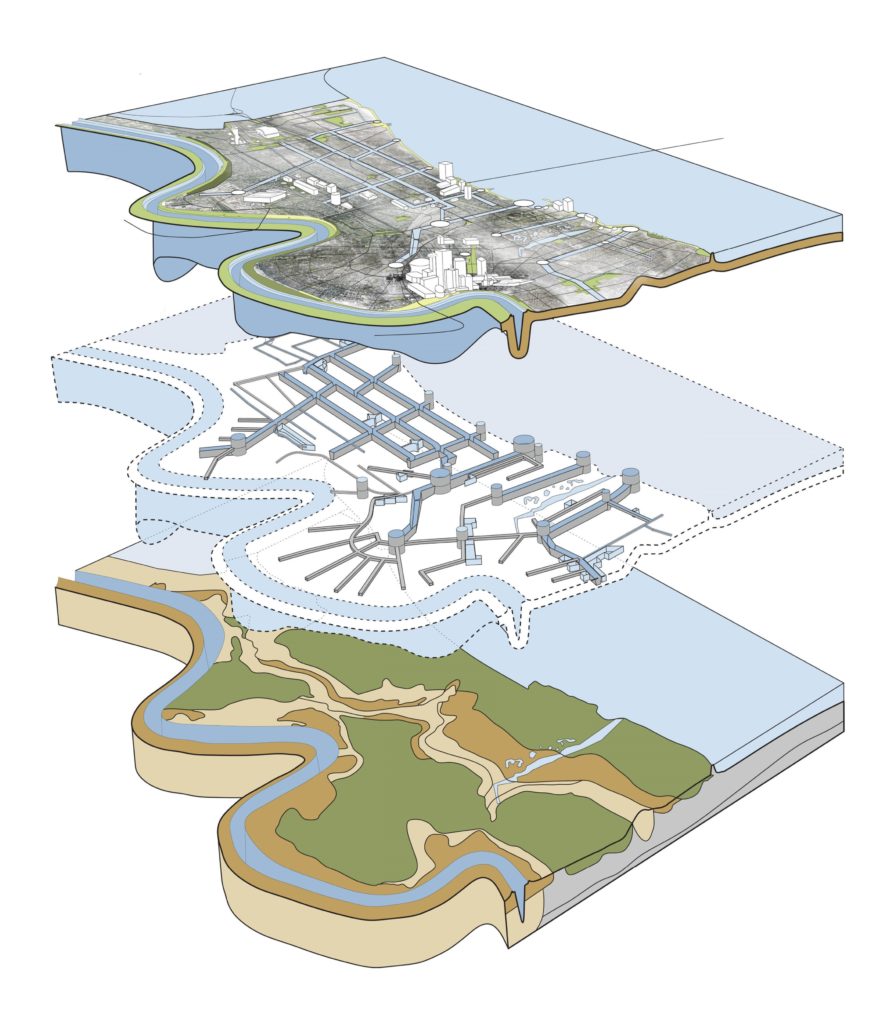
Waggonner & Ball is located in New Orleans, where the Mississippi River meets the Gulf of Mexico, and our collaborative Living with Water® approach to resilient design is grounded in the place where we live and work.
Our design approach is based on Living with Water® and Building with Nature. Like water itself, these concepts cross borders, disciplines, and scales. Our methodology begins with a regional awareness and layered strategies at increasingly higher resolutions in order to integrate
systemic and structural measures.
We approach resilience, planning & implementation with an emphasis on ecology, history, and character
With a diverse team of community members, design professionals, and government officials, Waggonner & Ball is currently working to protect the neighborhood’s assets – including regional power production facilities, historic structures, public housing, and a private university – from risks posed by intense coastal storms and heavy rainfall events, which cause repetitive losses from flooding and power outages.
To date, the Resilient Bridgeport project includes a coastal defense system to protect the perimeter of the South End Peninsula, interior stormwater infrastructure improvements, street raising with improvements to lift the surrounding development datum and re-envisioning the entry to the historic Olmsted designed Seaside Park.
Issue 1: Design Conditions
Issue 2: Adaptation at the Water’s Edge
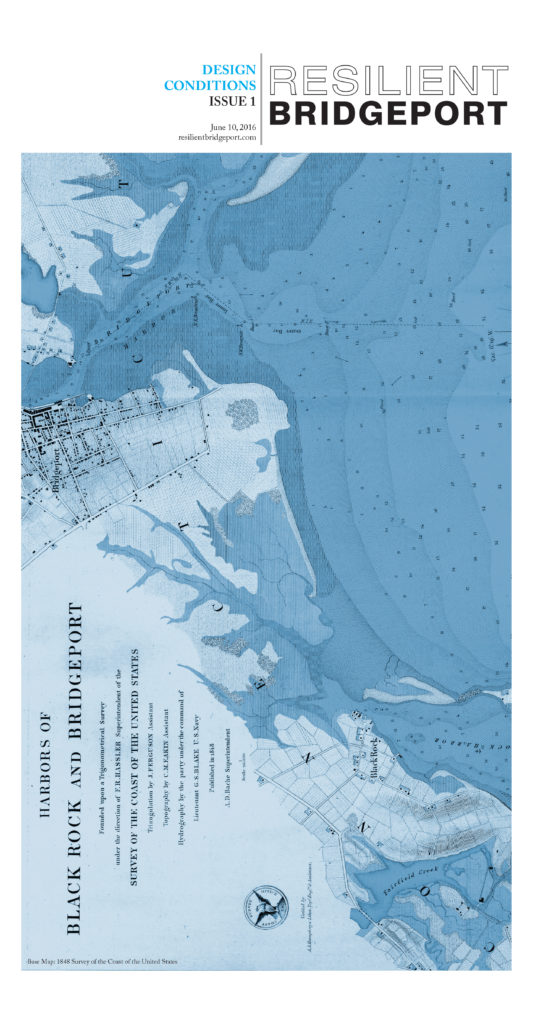
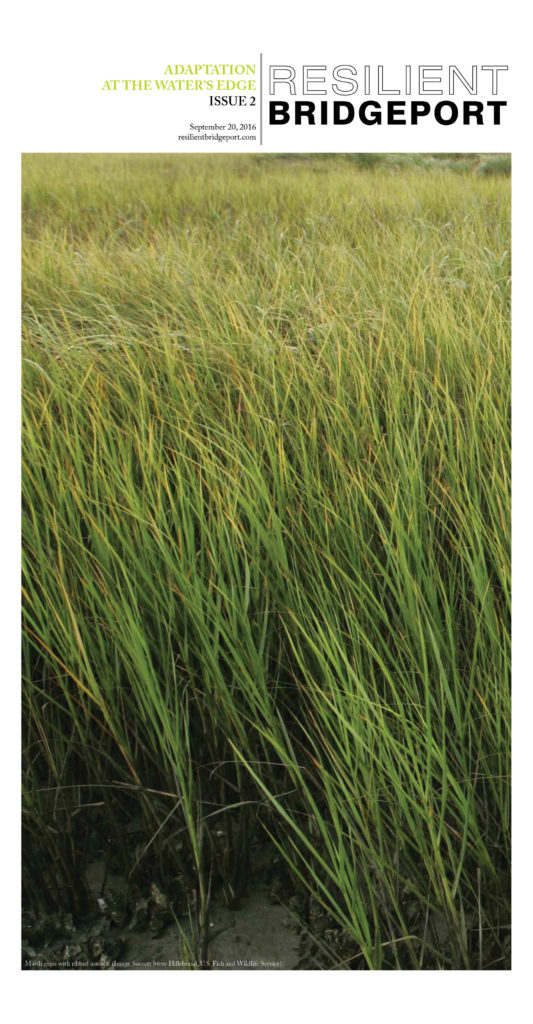
The Living With Water® approach has resulted in over $400 million in federal resilience awards since 2016.
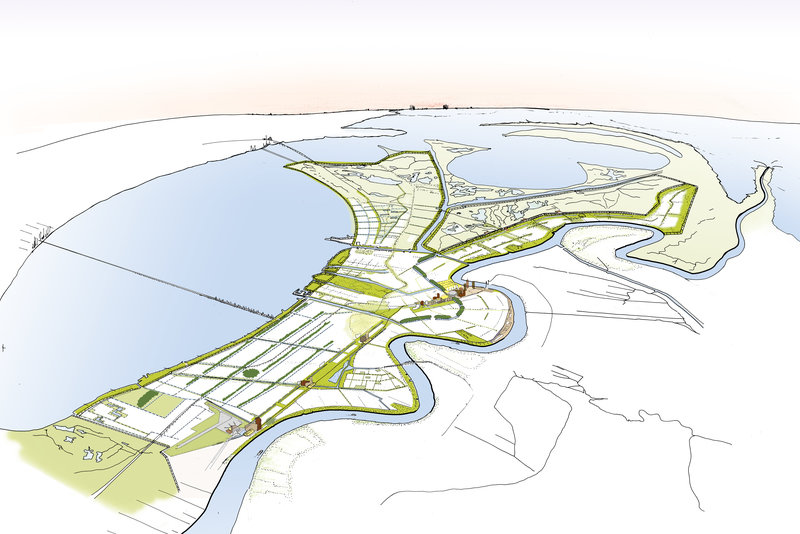
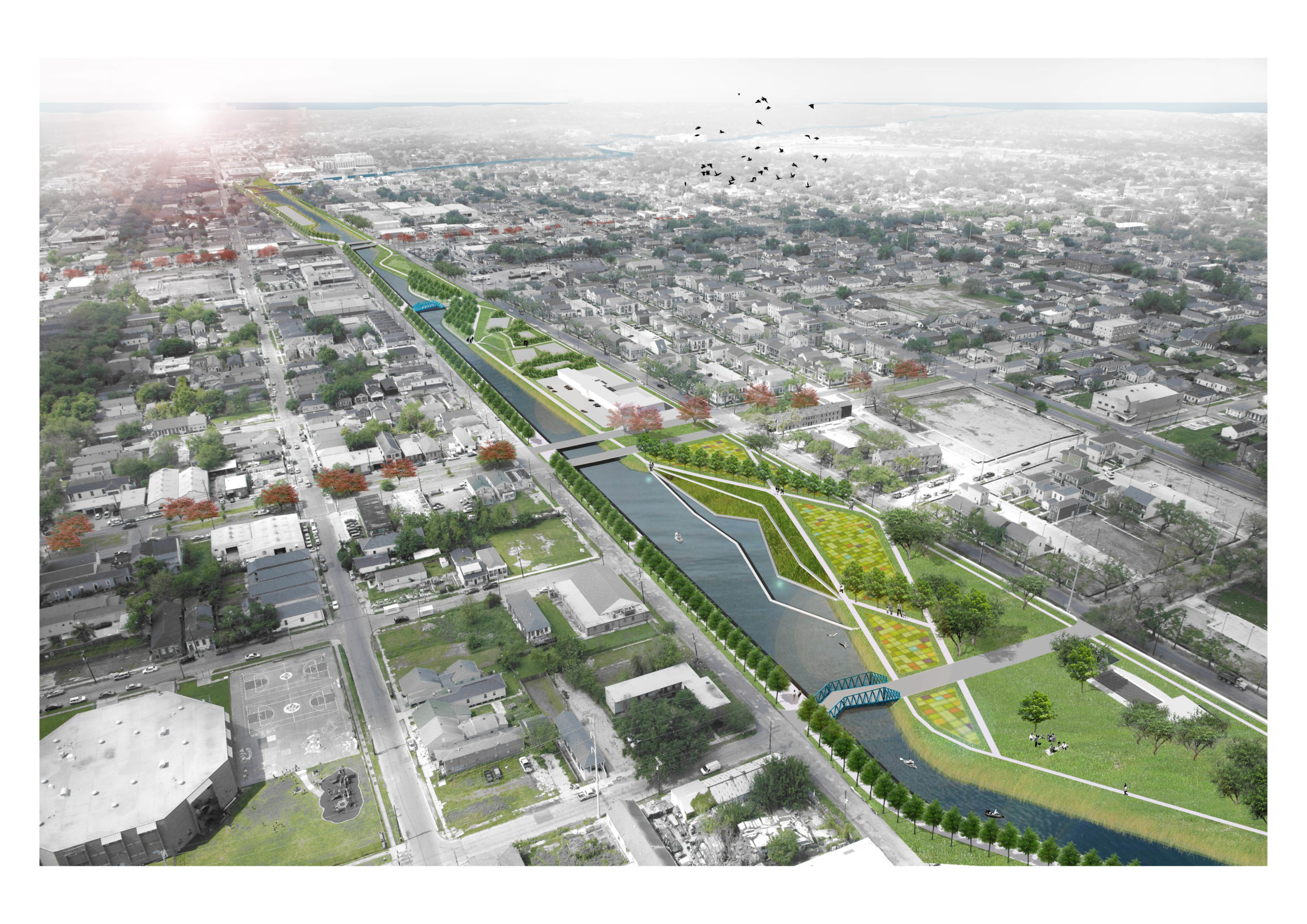
The New Orleans region has been surrounded and defined by water since its founding. However, flooding from frequent rainfall and land subsidence from current drainage practices are frequent and growing challenges.
Building on the firm’s award winning Dutch Dialogues® New Orleans workshops, Waggonner & Ball led the Greater New Orleans Urban Water Plan, a water-based landscape and urban design proposal that illustrates how the region can live with water rather than fight against it. The Plan employs a multi-layered, ground-up approach that is science-based, place-based, and adaptable. We convened and coordinated a large international multidisciplinary team to develop the multiscaled, actionable strategy. Waggonner & Ball’s leadership has created a shift in public policy and project implementation, urban planning, and increased support for best practices of urban water management vision in the city and region.
Waggonner & Ball is the prime consultant for Resilient Hampton, which builds upon earlier work from the Dutch Dialogues® Virginia workshop that the firm also led. The City of Hampton committed to a holistic, multi-phase effort that includes citywide planning, addressing resilience with a local military base, and the design of specific projects that will create multiple benefits. This broad, comprehensive, and long term strategy values existing assets while planning for future adaptation.
The Phase 1 Living With Water® Hampton document is the first step in creating a strategy for a resilient city by identifying both threats and community values. Analyzing the main forces of water in Hampton – storm surge, tidal action, stormwater, and groundwater – help understand the current condition and plan for the future. A framework of principles, goals, and values developed from place-driven analysis, including public workshops and community meetings. Understanding places that share common water conditions will guide future projects, and an evaluation tool will assist with prioritizing implementation of resilience efforts.
A partnership with Langley Air Force Base developed a unique, unprecedented addendum to a previous Joint Land Use Study in order to prioritize design strategies for resilience and adaptation, so that the City of Hampton can continue to support the base.
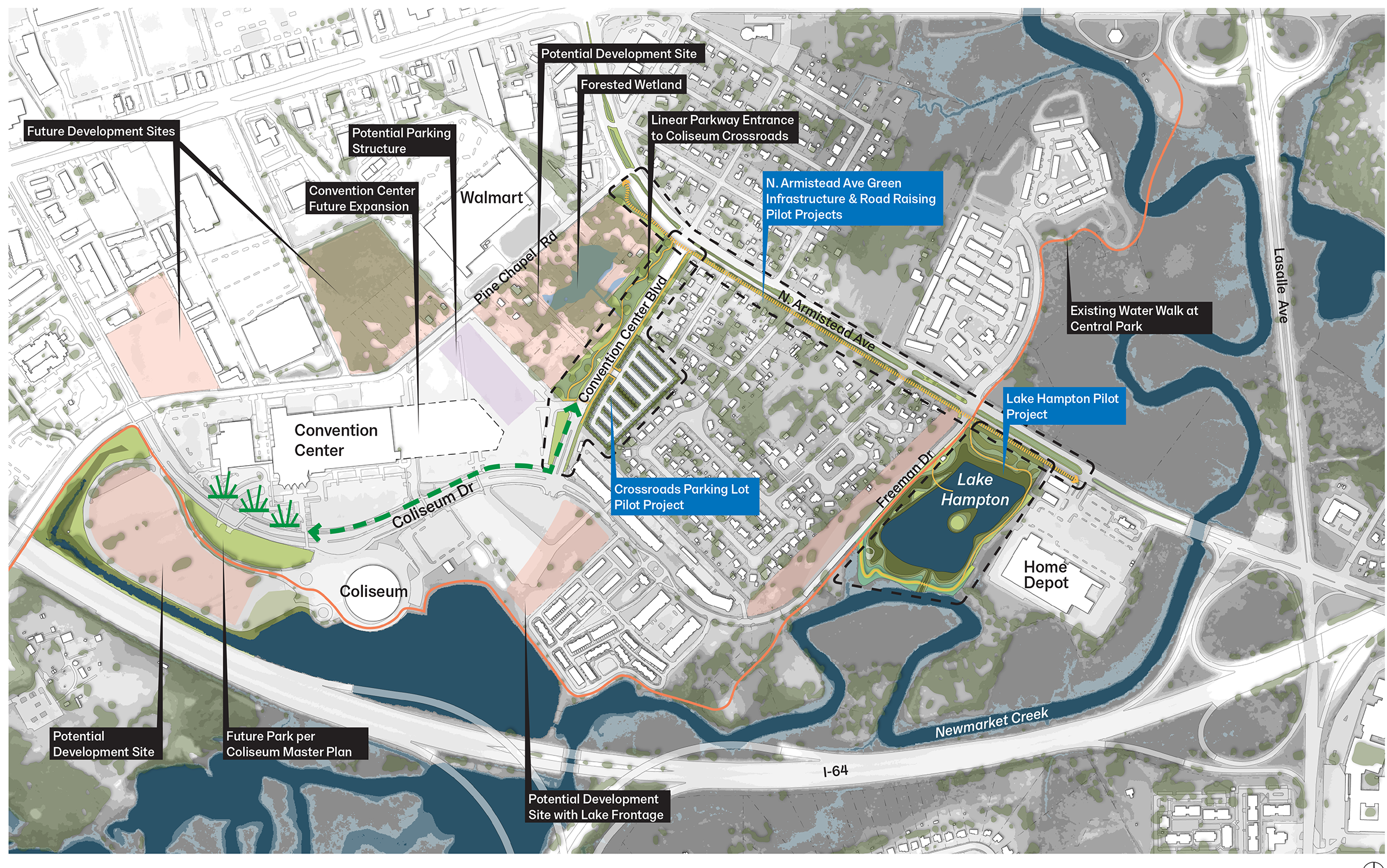
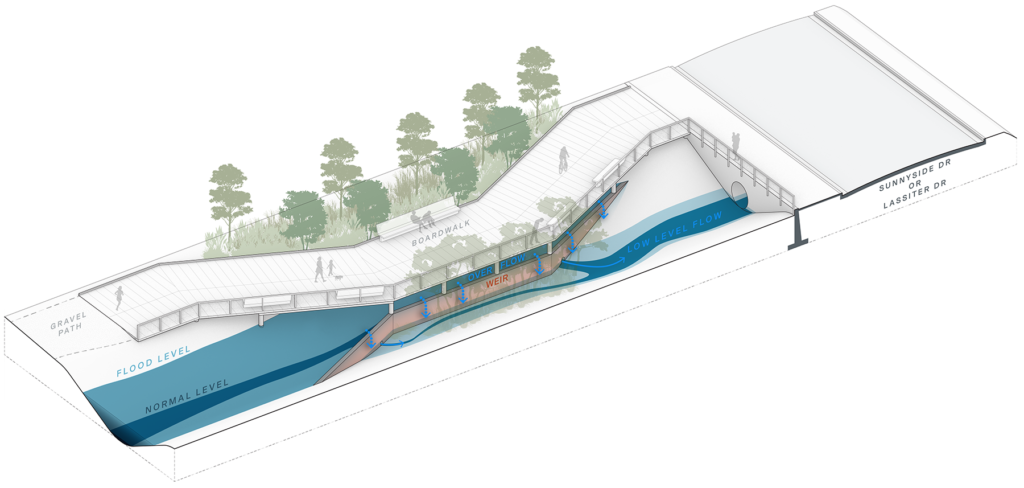
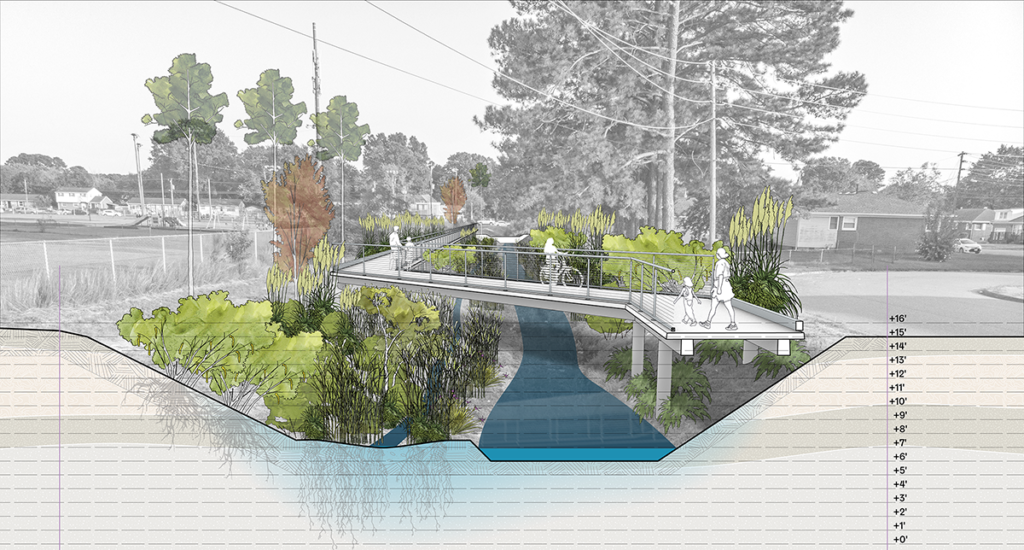
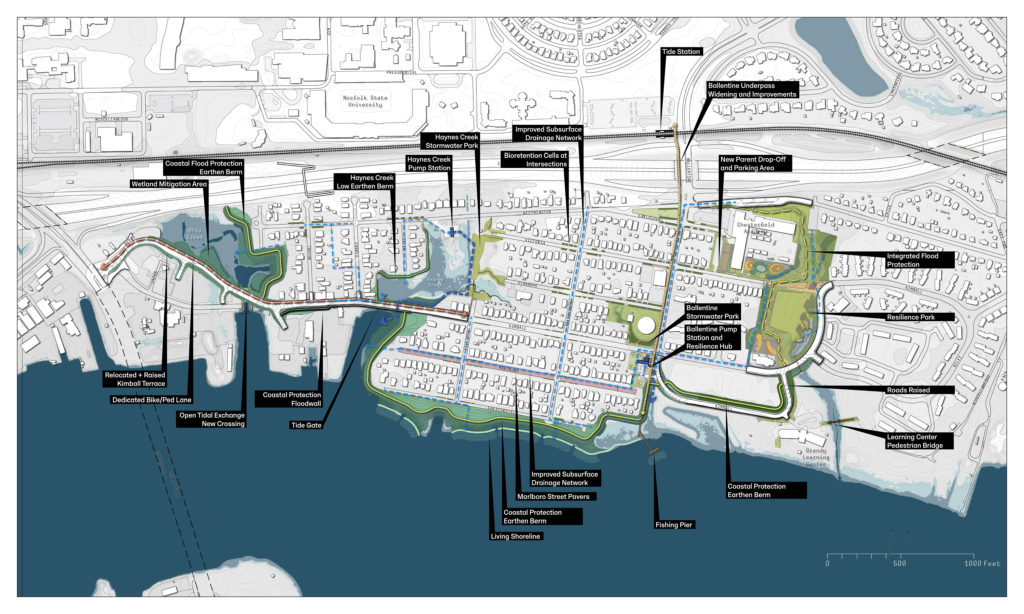
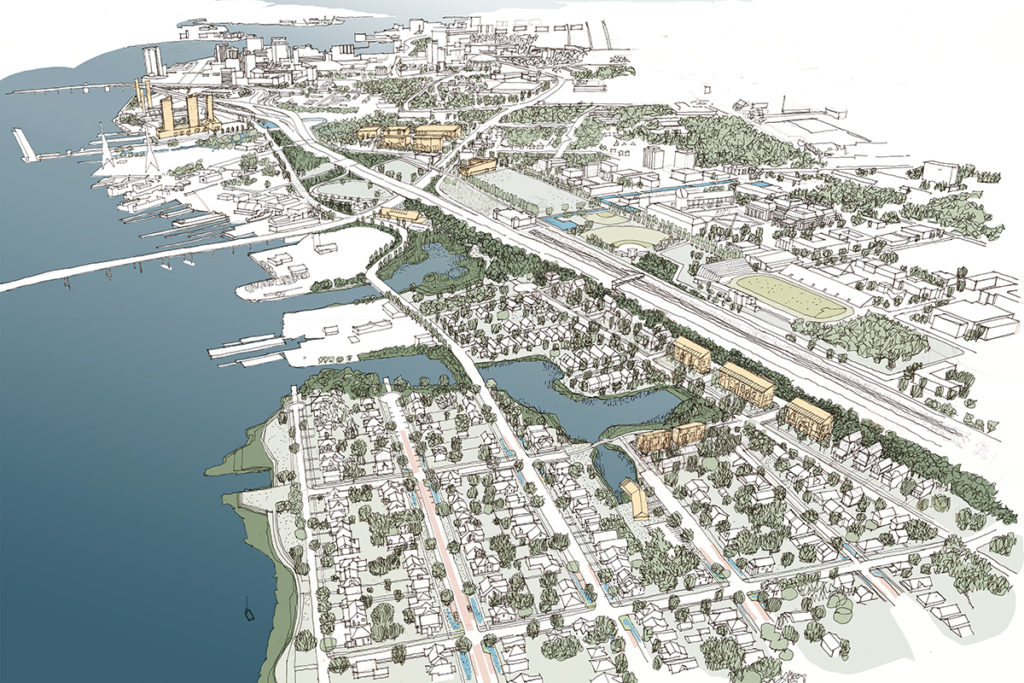
Funded as part of the HUD-initiated National Disaster Resilience Competition (NDRC), the Norfolk Ohio Creek Watershed project aims to reduce risk from nuisance flooding and coastal inundation for two neighborhoods along the Elizabeth River. The project is organized into three major strategies: coastal defense, Living With Water®, and connectivity with amenities.
Waggonner & Ball was the lead designer on the NDRC application and is the lead architect and urban design for the implementation phase of the project.
A coastal protection alignment, designed as a continuous berm or floodwall, encircles the edge of the historic Chesterfield Heights neighborhood to reduce risks posed by increasing storm surge due to sea level rise, reduce coastal erosion, and expand tidal ecosystems through integration of a living shoreline.